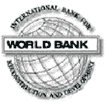|
 Mumbai: India would have to invest around $25 billion annually in new rural and urban infrastructure to achieve a growth target of over 10 per cent, according to a World Bank report. South Asian countries could see single-digit poverty rates in a decade if economic growth accelerated to 10 per cent a year until 2015, says the report, Economic Growth in South Asia. Mumbai: India would have to invest around $25 billion annually in new rural and urban infrastructure to achieve a growth target of over 10 per cent, according to a World Bank report. South Asian countries could see single-digit poverty rates in a decade if economic growth accelerated to 10 per cent a year until 2015, says the report, Economic Growth in South Asia.
South Asia, especially India, should try to build on the recent strong growth by attuning policies towards increasing investment and productivity and improving quality of labour. This could reduce poverty levels by two-thirds while addressing the perennial income disparities and the lack of better services, says the report. South Asia is home to some 400 million poor people and this means the number of people living in poverty could go down to around 130 million in less than a decade. Based on the economic performance of the past decade, the report suggests that South Asian countries could aspire to emulate the East Asian growth rates of seven to 10 per cent that lifted millions of people out of poverty in a short span. However, the report says, widening income disparities in South Asian countries may make it difficult for these economies to sustain the strong growth the region is currently witnessing. "While countries in the region are growing rapidly, evidence shows that expansion, due to its uneven nature, is deepening income inequality and may be hard to sustain in the longer term if the key constraints are not addressed," says the report. In most of South Asia poverty is perennial and is increasingly becoming evident as the regions that are rich get richer and the poor regions get poorer, according to the report. The economic growth that India achieved is skewed and the already great divide between the rich and the poor is widening still. The `Two India's' have failed to meet and the challenge for the planners is to see that development helps and the 300 million poor people are not left further behind. 'Not only are these regions poorer, but their growth rates are substantially slower than the better-off regions,' the report states. "South Asia's decade-long economic expansion has raised the possibility that the sub-continent could eliminate poverty in our lifetime…. But to realise this dream, South Asians must create the conditions and incentives necessary to sustain and accelerate growth that benefits all. The economic well-being of several hundred millions of people depends on it," says Shantayanan Devarajan, World Bank chief economist for South Asia and co-author of the report. The report also suggests country-specific measures like reducing fiscal deficits and public debt in India, strengthening governance in Bangladesh, deepening human capital in Pakistan, and addressing civil conflict in Sri Lanka and Nepal. "Bangladesh, India, and Pakistan have all grown at over 5.0 per cent per year on an average during the last five years. Growth in both Pakistan and India topped 8.0 per cent last year. Forecasts put South Asian economies on a steady path of expansion this year,: the report says. In the last decade, poverty in Bangladesh, India, and Nepal fell by 9.0, 10 and 11 per cent respectively; in Sri Lanka it fell by 6.0 per cent. Only in Pakistan poverty increased by 8 percentage points due to economic stagnation throughout the 1990s, according to the report.
|